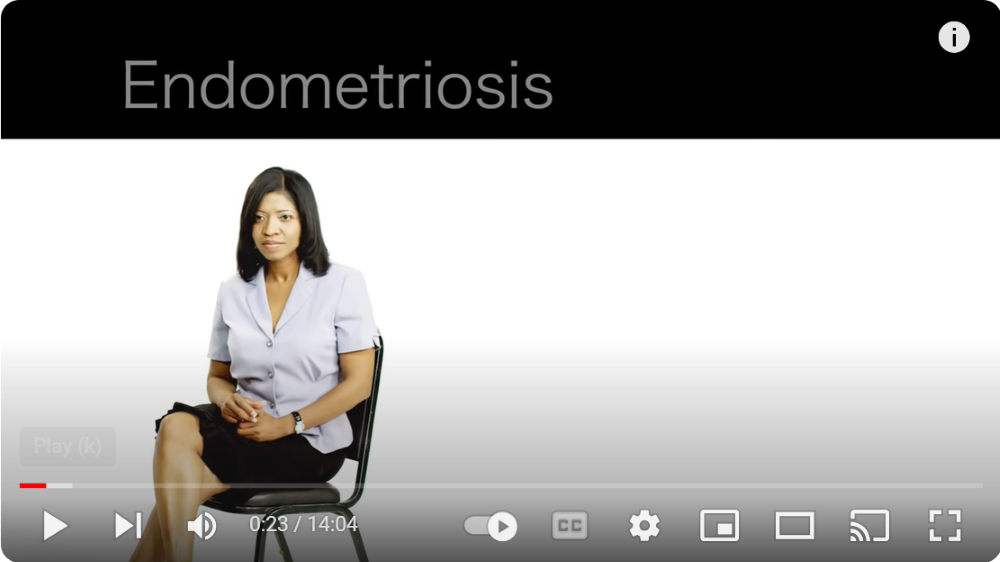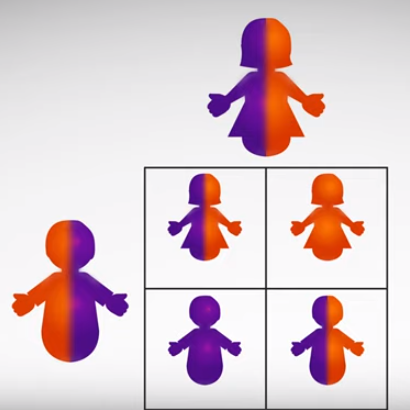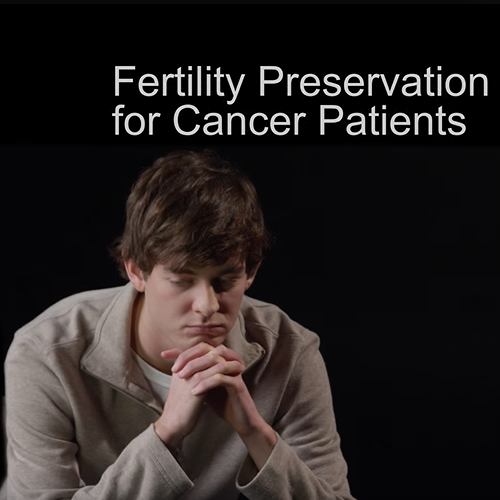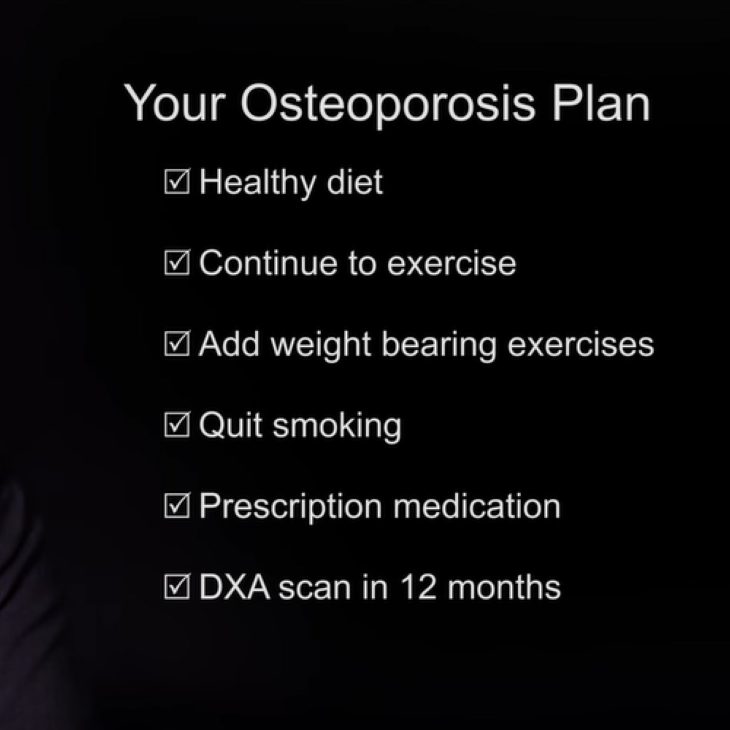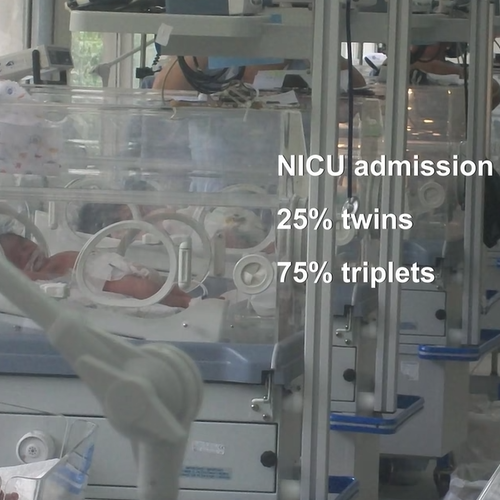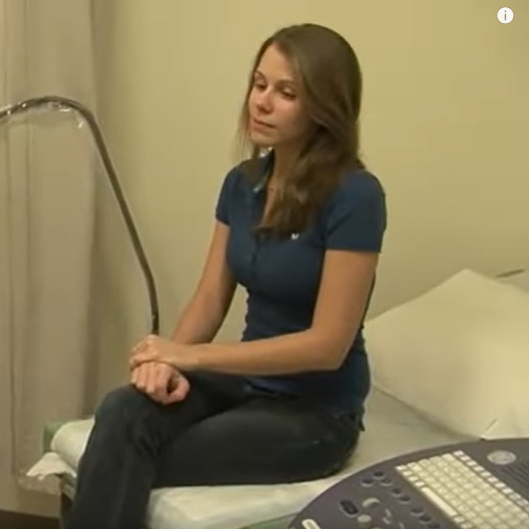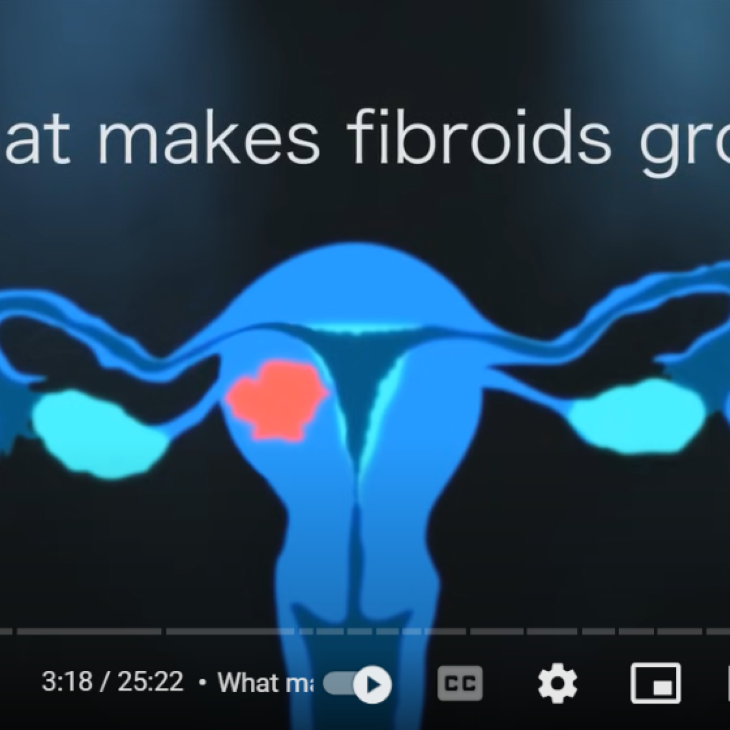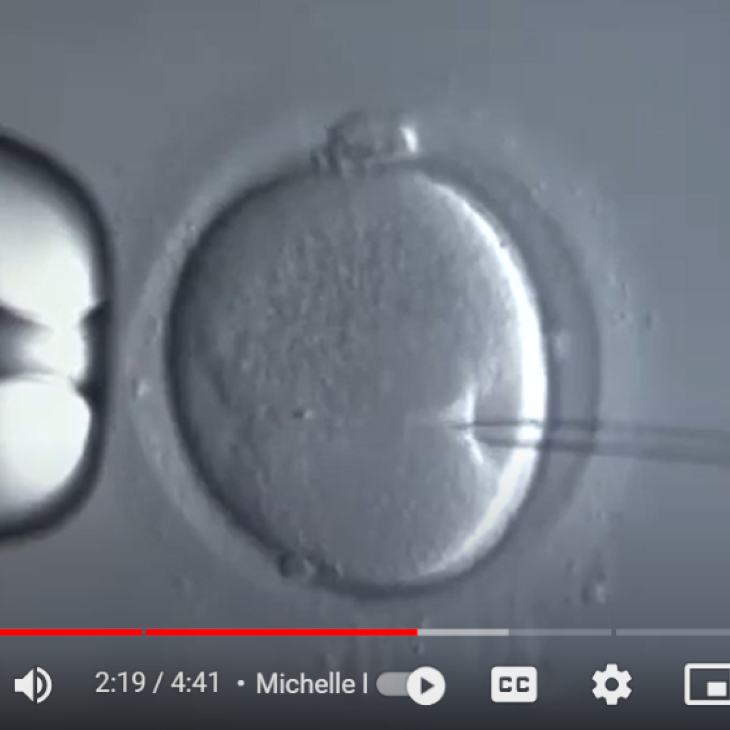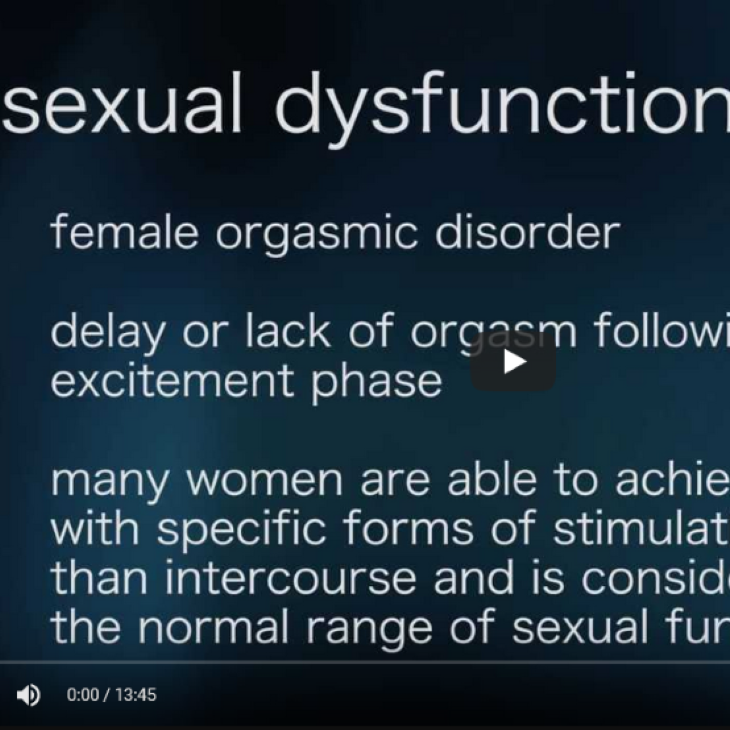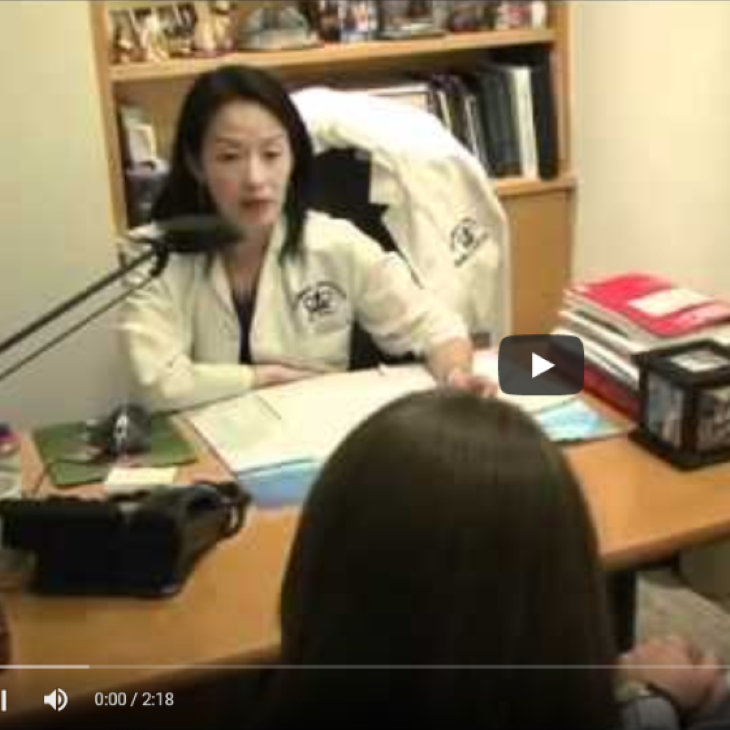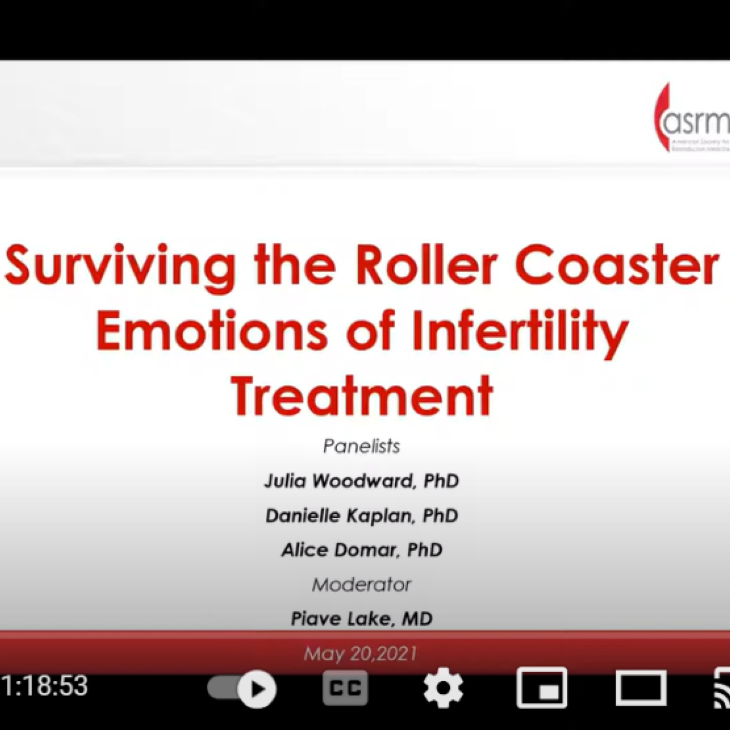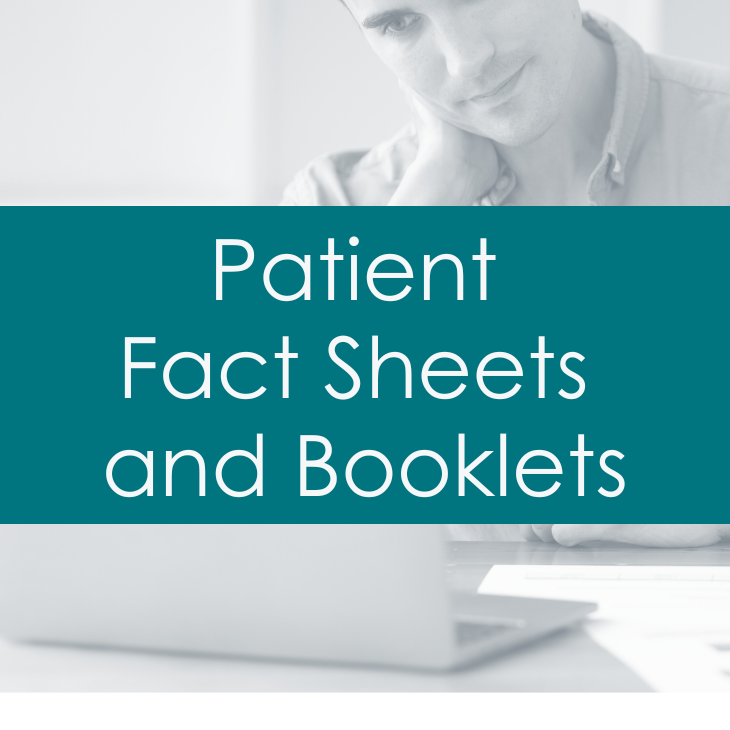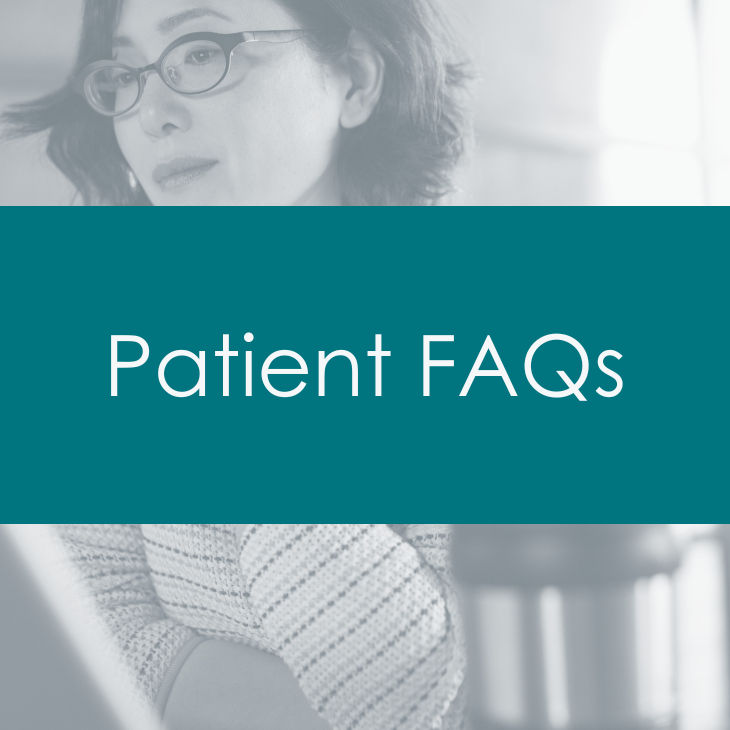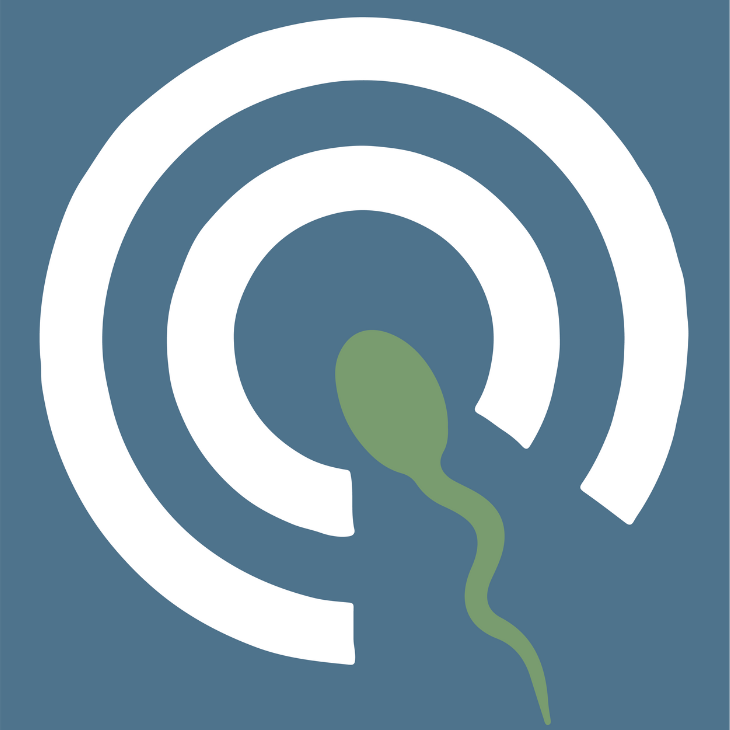Endometriosis
Transcript
Endometriosis is a condition in which endometrial tissue, which normally lines the uterus, develops outside of the uterine cavity in abnormal locations.
A 30-year-old woman has been trying unsuccessfully to get pregnant for 3 years and has painful menstrual periods and occasional pain with sexual intercourse. During her pelvic examination, her doctor notes that she has some tenderness at the top of her vagina and recommends further testing. She has a vaginal ultrasound that shows a 5 centimeter cyst on one ovary. Other tests for infertility are normal, including a hysterosalpingogram (an X-ray dye test to evaluate her tubes), and her husband’s semen analysis. Her doctor thinks she may have endometriosis and recommends a minimally-invasive surgery called a laparoscopy. During surgery she is found to have moderate (stage III) endometriosis. An ovarian cyst and several endometrial implants are removed through the laparoscope. She was able to return to full activity soon after surgery. Her pain improves and she becomes pregnant 2 months later without further treatment. She has an uneventful pregnancy and has a vaginal delivery of a healthy boy.
Although it is a common female disorder, endometriosis can often be a mystery to women and healthcare providers alike.
This abnormal endometrium can grow on or into other organs causing an inflammatory response that can lead to irritation and scar tissue formation. Endometriosis is usually found near the uterus on the peritoneum, which is the lining of the abdomen and pelvis. Endometriosis is typically on the surface of the peritoneum but it can grow deep into this lining. It can often grow on the ovaries, usually on the surface, but can also grow deeper into the ovarian tissue to cause endometriomas. In severe cases, endometriosis can grow into other organs including the intestines, bladder, vagina and ureters, which are the tubes from the kidney to the bladder. Although it’s rare, endometriosis can be found outside the pelvic cavity in almost any location in the body.
Rarely, women may have rectal bleeding or localized pain and swelling on a cyclic basis. Endometriosis is also associated with infertility, which is the inability to become pregnant.
Here are some statistics about endometriosis. Although it can occur in any woman who has menstrual periods it is only found in 10% of all women. Some women have no symptoms and are unaware that they have endometriosis. Endometriosis is found in 20% of women with chronic pelvic pain and 25% to 50% of women with infertility.
Let’s learn a little about how endometriosis develops.
During each menstrual period, normal endometrial tissue (the lining of the womb) is shed and passes through the cervix as “menstrual blood.” In most women, menstrual blood and endometrial cells flow through the fallopian tubes into the abdomen. Endometriosis develops when these endometrial cells are not removed by the body and begin growing in places outside the uterus. It is not known why most women are able to clear these endometrial cells in the abdomen, while others do not. A change in the function of the immune system has been one potential theory.
No one is certain why many (but not all) women with endometriosis have pain. Somehow, perhaps by local irritation or by some communication between the endometriosis and the nervous system, pain is triggered. Both the normal endometrium and endometriosis are stimulated by estrogen. In the first half of the menstrual cycle, estrogen is normally produced to thicken the lining of the uterus. Estrogen can also stimulate the growth of endometriosis in and around the pelvic cavity.
Progesterone is produced in the second half of the cycle, to help prepare the uterine lining for the implantation of a fertilized egg or embryo. If there is no pregnancy, progesterone production drops causing the endometrium to shed. Endometriosis implants in other places may cause bleeding and contribute to pelvic pain symptoms.
It is not known how endometriosis causes infertility. It is likely that even mild endometriosis can cause changes that may interfere with egg pickup, fertilization, embryo transport through the fallopian tubes, or embryo implantation in the uterus. In severe cases, scar tissue involving the tubes and/or ovaries may interfere with egg release or pickup, or prevent the sperm from reaching the egg.
How is endometriosis diagnosed?
A woman’s menstrual history of heavy and painful menstrual bleeding can provide many clues, but this is not enough to make the diagnosis. In addition to questions about your symptoms and menstrual cycles, your doctor will ask about other women in your family. Having a mother or sister with endometriosis means a woman is more likely to have it also.
A pelvic exam is an important part of diagnosis. Your doctor may be able to feel nodules that are suggestive of endometriosis during a vaginal and rectal examination.
Ultrasound can be a helpful tool in diagnosis and may show blood-filled ovarian cysts that may be endometriomas.
Finally, the way a woman responds to medical therapy may provide clues about endometriosis. Relief of chronic pelvic pain with medications suggests the possibility of endometriosis, but this is an inaccurate method for diagnosis.
For a definite diagnosis of endometriosis, surgery is required. Laparoscopy, or “band-aid surgery” through the navel, is the most common surgical approach. Using a telescope device to look inside your pelvis, your doctor can see the endometriosis implants. Open abdominal surgery is needed for treatment of some endometriosis cases. When endometriosis is suspected in a location outside of the pelvis, or if the surgeon is unsure when visualizing lesions in the pelvis, surgical biopsy to remove a small piece of tissue is needed to make the diagnosis.
What does endometriosis look like?
Endometriosis is identified at the time of surgery and can have several common appearances.
Superficial endometriosis has small, flat or raised patches sprinkled on the pelvic surface. These patches can be clear, white, brown, red, black, or blue. Scar tissue can develop between structures and tissues in places where endometriosis has grown. Deep endometriosis looks like nodules of various sizes in the affected tissue. Ovarian endometriosis cysts, called endometriomas, are filled with thick brown fluid, and are thus called “chocolate cysts.”
Biopsy and microscopic examination of endometriosis lesions is often used to confirm the diagnosis.
Following surgery, the locations and amounts of endometrial tissue outside the uterus are charted and a scoring system may be used by your doctor to document the severity of the disease. Minimal and mild endometriosis scores range from 1-15, while moderate and severe endometriosis have scores over 15. It is the moderate and severe categories of endometriosis that can have the biggest impact on a woman’s ability to become pregnant.
How is endometriosis-related pain treated?
Endometriosis is usually treated at the time of surgery, with the goal to remove as much of the endometrial implants as possible. Superficial endometriosis can be destroyed using any of several techniques. These include electrosurgery, laser, ultrasonic scalpel, or surgical scissors. Surgery is most often needed to remove deep endometriosis from an affected organ, such as the ovary.
Several medical treatments are often effective for endometriosis. Non-steroidal anti-inflammatory agents (such as ibuprofen) are often used and can help with pain. Narcotic medications are sometimes used for severe pain, but these should be used sparingly as they can be addictive.
Hormone therapy is often helpful for endometriosis pain, but should only be used by women who do not want to become pregnant. Birth control pills work by decreasing the thickness of the endometrial lining and the amount of menstrual flow. Most birth control pills contain two hormones, estrogen and progestin. Progestin-only hormones also reduce the thickness of the endometrial lining. Progestins can be given as a pill, by injection, or through an intrauterine device (IUD). Symptoms of endometriosis usually return after stopping birth control pills and progestins.
GnRH analogs are another type of therapy. These drugs work by decreasing the amount of estrogen in a woman's body, which stops the menstrual cycle and ovulation. Leuprolide acetate is an example of a GnRH analog given by injection. Side effects of these drugs are similar to those of menopause and include hot flashes and bone loss. Taking low doses of estrogen and progestins, sometimes called “add-back” therapy, helps prevent these side effects.
Many women find that lifestyle changes help them manage many of the discomforts of endometriosis. Regular exercise and weight control can reduce body fat to help keep the amount of estrogen low. It’s also helpful to avoid large amounts of alcohol and caffeinated beverages.
It’s also important to look for and treat other causes of pelvic and abdominal pain. Chronic pelvic pain may have many different causes and more than one cause is often present in the same woman. Pain can come from the bladder, intestinal area or muscles. All other possible causes of pelvic and abdominal pain should be investigated and treated.
How is endometriosis-related infertility treated?
For women who want to become pregnant, particularly those with moderate and severe endometriosis, surgery is a treatment option. Superficial endometriosis can be destroyed using any of the techniques we’ve already discussed. Scar tissue is removed as much as possible to allow free movement of the internal organs. Ovarian endometriomas may be surgically removed. This will improve fertility in some women.
Medical treatment with hormones that suppress the ovaries has not been found to improve fertility in women with endometriosis. However, pain medications may relieve discomfort.
The ovaries can be stimulated with a pill called clomiphene citrate, or injections of the hormone FSH to increase hormone levels. These drugs cause release of multiple eggs during each cycle, but also increase the risk of multiple pregnancies. Often, these drugs are used along with a procedure called intrauterine insemination (IUI), in which the partner’s sperm is washed and placed directly into the uterus. This increases the number of sperm coming into contact with the egg(s), and increases the chance for pregnancy.
In vitro fertilization (IVF) is the most effective, but also the most expensive treatment for infertility associated with endometriosis. IVF is recommended when other treatments are not successful.
For IVF, the ovaries are stimulated with injectable hormones and the growth of the eggs is carefully monitored with ultrasound and blood hormone levels. When the eggs are mature, they are removed using a transvaginal procedure. The eggs are fertilized with sperm in the laboratory. Usually one or two embryos that develop are transferred directly into the uterus.
Pregnancy rates for IVF are similar for women of similar ages both with and without endometriosis.
Summary
Endometriosis is a common cause of pain and/or infertility in women, although many women have no symptoms from this condition. Medical or surgical treatment may be effective for endometriosis-related pain. Evaluation and treatment of other coexisting causes of pelvic pain is important, especially when endometriosis treatment does not relieve the pain. Women with moderate to severe endometriosis who desire pregnancy can be treated with surgery, which can usually be done laparoscopically. Many women will achieve pregnancy after treatment of endometriosis. Hormonal treatments for endometriosis generally prevent pregnancy. In some cases, advanced infertility treatment methods such as IVF will be required.
If you have questions about endometriosis, talk to your doctor about your individual treatment options.
Endometriosis
Infertility
Dyspareunia or Painful Sex
Find a Health Professional


